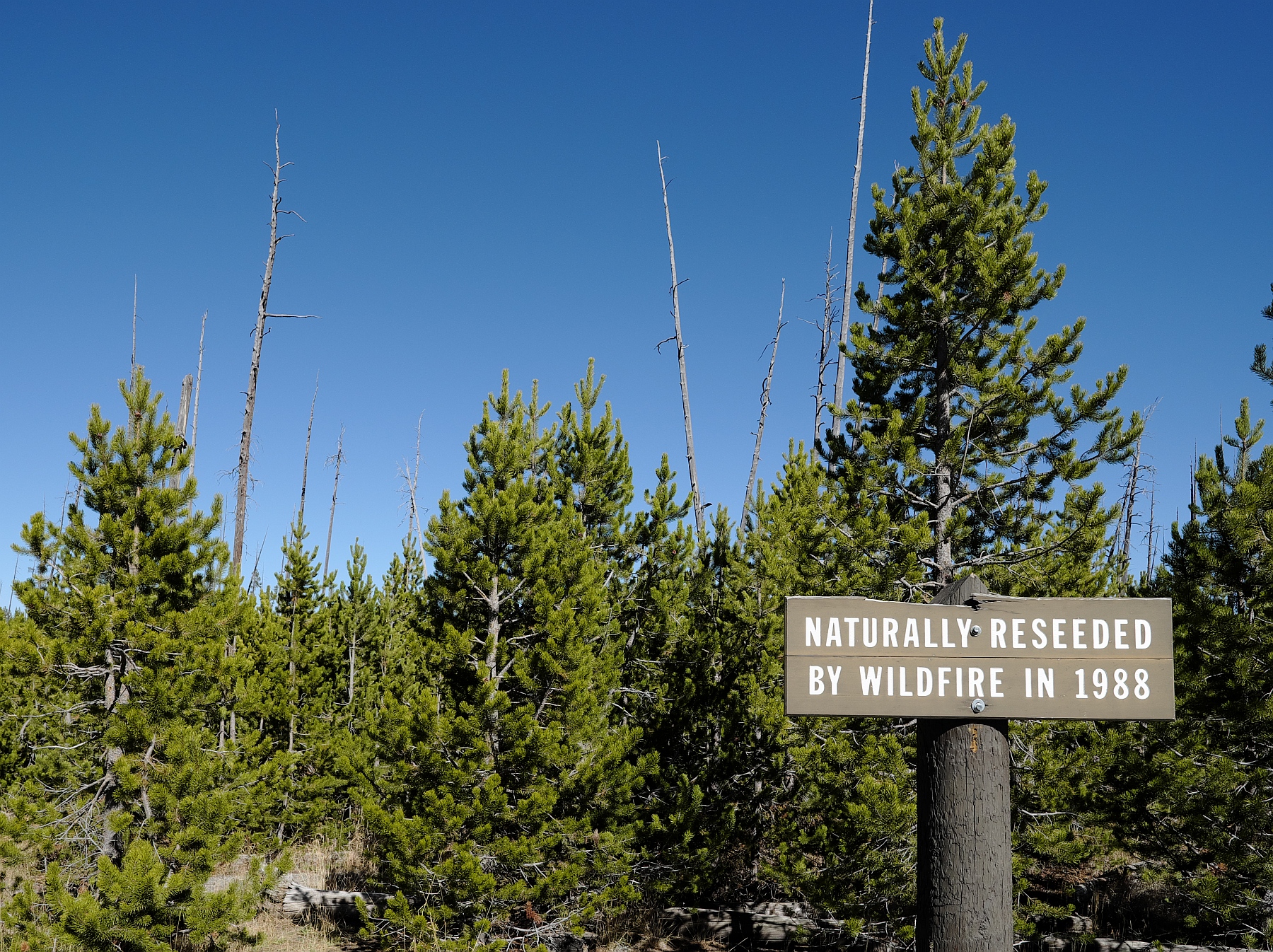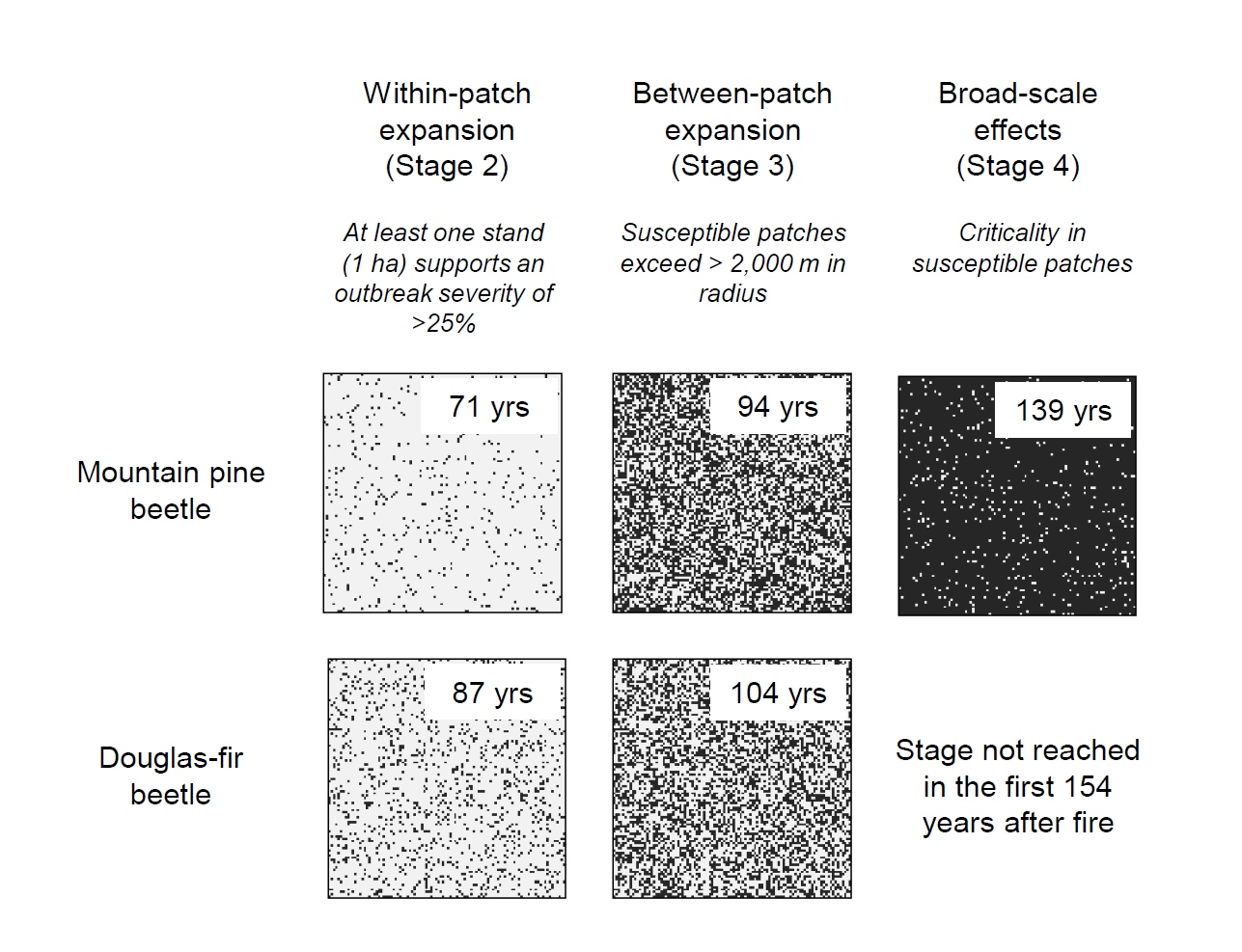Current disturbances reduce the risk of future disturbances
In a recent paper published in PNAS we show that large recent fires in the Western US dampen and delay the risk for future bark beetle outbreaks. Disturbance-induced variability in stand structure was identified as a main mechanism of negative feedbacks between disturbances.
Wildfires have increased in western North America, creating extensive areas of regenerating forests. There is concern that recent large, stand-replacing fires will synchronize forest development and commit landscapes to a future of increased disturbance, such as bark beetle outbreaks that require extensive, well-connected forests of large host trees.

We analyzed forest development after large high-severity 1988 fires in Yellowstone National Park to assess future susceptibility to bark beetle outbreak. Although stands originated from the same event, persistent variation in postfire tree density and size protracted the onset of susceptibility to bark beetle attack among stands. Furthermore, postfire variability delayed emergence of the habitat connectivity required for broadscale outbreaks, suggesting spatial variability is an important dampening mechanism for disturbance interactions.

The analysis shows that disturbance interactions can be both amplifying and dampening, and that spatial variability is an important means to dealing with intensifying disturbance regimes. Managers should thus embrace disturbance-created variability, rather than reduce it (e.g., through salvage logging and schematic planting after disturbance).
The article was widely discussed in the media in Austria and the US: